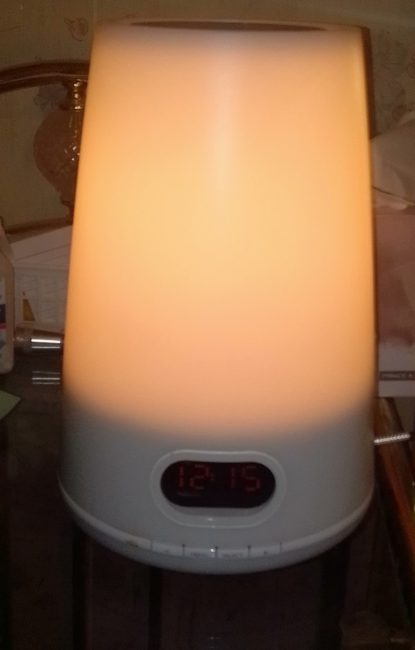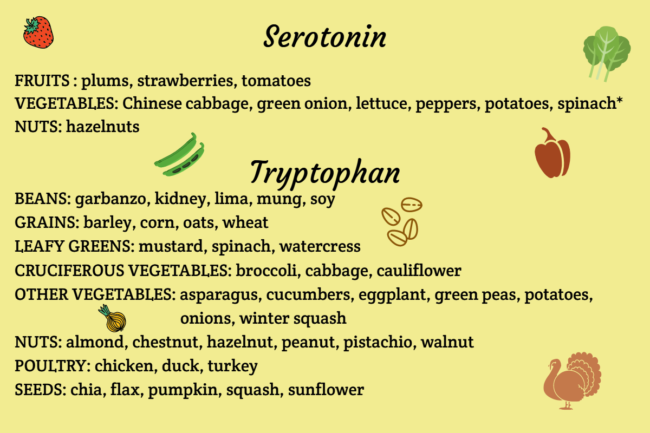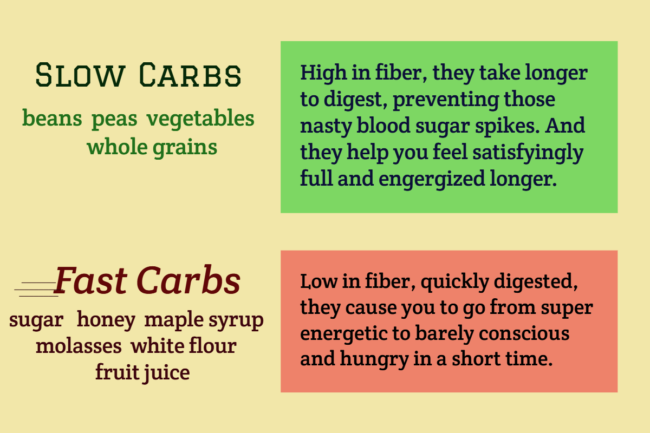
The SAD Players: D, Melatonin, Serotonin, and Tryptophan
Vitamin D
Since the body can make its own supply, technically vitamin D is a hormone, one that’s essential for the working of all body systems. One of its jobs is to activate serotonin; so it plays an important role in the homegrown SAD management scheme of things. It’s made by a combination of sunlight – specifically type B ultraviolet (UVB) – and 7-DHC, a cholesterol in our skin. But winter sunlight doesn’t give enough UVB to get the process started.In the absence of light, there’sMelatonin
Melatonin is the nighty-night chemical. OK, I just made that up; but helping the body prepare for sleep is what it does. It’s triggered by – you guessed it – low light. SAD people often have high levels of melatonin.Serotonin
Known as the happiness chemical, serotonin is a key neurotransmitter in the brain, carrying messages from nerve cell to nerve cell, managing things like mood, sleep, and appetite. Low serotonin levels cause symptoms like:- losing interest in favorite activities
- feeling run down, out of energy
- wanting to hibernate, withdraw from social interaction
- oversleeping
- brain fog
Tryptophan
An amino acid, or protein builder, tryptophan makes serotonin work better. In combination with certain proteins (like turkey), it can have a calming effect, you know – the turkey coma thing.There are a number of things that can be done to overcome SAD; being in your yard can tick several of those boxes. While this in no way replaces professional care, especially in severe cases, here’s the backyard/garden approach to SAD.The Homegrown Approach to Beating SAD
Get Exercise


Whether you’re growing indoors or out, depending on the task, you’ll get to work all sorts of muscle groups, lubricate joints, and get the heart pumping. And exercise is a stress-buster, kills cravings, and boosts serotonin.
Gardening in winter. The Maryland Home and Garden Information Center blog Vegetable Crops to Plant Now (meaning September) includes a nice variety of leafy greens along with radishes, broccoli, and turnips.
Don’t forget to simply take a walk. If the weather gets to be too much, make a route indoors – mine’s in the basement. If you want a winter project, how about creating an aroma garden along your indoor walking path for an added boost?
Get Some Light
We’re not so far north that we spend part of the year in darkness. I’d be in Alaska these many years if not for that little detail. But it can be really hard to get up and going in the mornings. But there are options: sunrise alarm clocks to get up you up and moving and full-spectrum lights to power you through the day.DIY Sunrise

- Set your wake-up time and alarm sound (mine offers a choice of an electronic buzz, birds, or music).
- Over a 30-minute period, the light comes on and increases in intensity and brightness.
- At the end of the 30 minutes, the alarm goes off.
Full-Spectrum Lights
When I managed a corporate library, I had full spectrum lights installed to compensate for the lack of windows. Did it help? I’m not really sure now… I once heard someone passing by in the hallway say the library looked like the Twilight Zone; so I guess that was something. Anyhoo…Bright Light Therapy (BLT), also called phototherapy, is one of the top SAD treatments. You sit near a light box, preferably in the morning, for 20 – 60 minutes. The box churns out a super-bright white light, 10,000 lux. By comparison, the lux range for buildings ranges from 100 to 1200 lux.It shouldn’t be surprising that regularly sitting near such intense light can have negative effects like eyestrain, headache, increased risk of macular degeneration, irritability, and difficulty sleeping.And it shouldn’t be surprising that Amazon has a page devoted to light boxes and full-spectrum lighting. Just keep in mind that “full-spectrum lighting” is a marketing term made up by manufacturers; there isn’t a single definition for what that means. Bottom line, adding brightness to dark winter days shouldn’t cost an arm and a leg.
Eating Well
In the original post, I included a picture of a strawberry bread pudding because it packed a serious serotonin punch. But I just really like this sweet potato toast from a previous post on breakfast. What did your garden grow?There are a lot of tropical fruits and nuts that could be mentioned, but the focus here is on a Mid-Atlantic harvest.Serotonin and Tryptophan

Carbohydrates
A craving for carbohydrates is the body’s way of boosting its serotonin supply. Unfortunately, too often the carbs easiest to reach are high in sugar and low in nutrients. Try some slow carbs:
Vitamin D
If your doctor hasn’t prescribed vitamin D or recommended that you get a good vitamin D supplement, you’re probably in the minority. Fatty fish, dairy, and mushrooms are the best food sources for vitamin D. And growing mushrooms is a pretty easy way to incorporate vitamins D2, D3, and D4. UV light is vital for producing the vitamin. Sitting mushrooms in the sunlight even after they’re harvested will raise their D level.
Fermented Foods
Fermented foods are an excellent source of probiotics which raise tryptophan levels in the blood. Have fun exploring the many recipes for pickling veggies, even the rinds. And there are tons of traditional and creative recipes for pickling cabbage as sauerkraut or kimchi. If you’re a sauerkraut fan, check out this recipe from the New York Times that combines smoked fish with sauerkraut.Conclusion
Start planning your anti-SAD strategy now:- Make plans to socialize online or in person.
- Get outdoors whenever possible (See our suggestions for winter and indoor gardening.
- Exercise indoors and out.
- Add light and scent to your living space.
- Challenge your mind.
- Nourish yourself with good proteins, carbs, and veggies. And chocolate.


